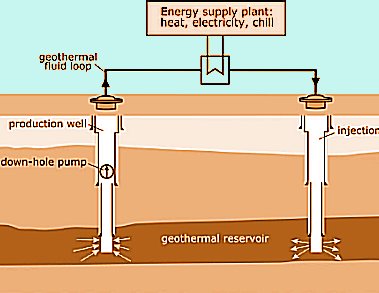Geothermal power plants generate power from an alternative source of energy that is independent of season and time of day and offers a significant potential on a worldwide scale. Only a small part of this huge potential is currently being used. The globally installed electrical power in 2011 summed up to about 11 GW.
The largest share of this capacity is generated from high enthalpy or high temperature geothermal reservoirs that are located at exceptionally favorable geological sites, e.g., Italy, Iceland or Philippines, with a high geothermal gradient. Less than 1 % of the currently installed capacity, but the predominant part of the still unexploited geothermal potential, is located outside these geological areas and is found in reservoirs of low temperature, typically between 100 and 200 °C, of large depths and often of low natural permeabilities.
Handling of the geothermal fluid, which is typically a complex mixture of salt solution and dissolved gases, is one of the main challenges for designing and operating reliable and efficient geothermal power plants. In the geothermal fluid loop, undesired mineral precipitation and fluid-material interactions must be prevented and the design and dimensioning of all components must be adapted according to the characteristics of the geothermal fluid.
Stephanie Frick and colleagues, Helmholtz-Zentrum Potsdam, Deutsches GeoForschungsZentrum GFZ – Internationales
Geothermiezentrum, Potsdam, Germany, outline geochemical and process engineering aspects as well as research activities in these fields and introduce the Groß Schönebeck site in Germany, which is a central site for geothermal research.
- Geochemical and Process Engineering Challenges for Geothermal Power Generation,
Stephanie Frick, Simona Regenspurg, Stefan Kranz, Harald Milsch, Ali Saadat, Henning Francke,Wulf Brandt and Ernst Huenges,
Chem. Ing. Tech. 2011.
DOI: 10.1002/cite.201100131




